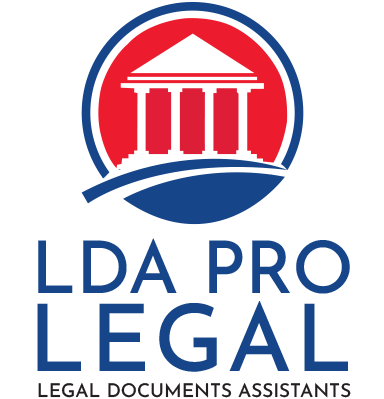(2) No-fault just cause, which includes any of the following:
(A) (i) Intent to occupy the residential real property by the owner or their spouse, domestic partner, children, grandchildren, parents, or grandparents.
(ii) For leases entered into on or after July 1, 2020, clause (i) shall apply only if the tenant agrees, in writing, to the termination, or if a provision of the lease allows the owner to terminate the lease if the owner, or their spouse, domestic partner, children, grandchildren, parents, or grandparents, unilaterally decides to occupy the residential real property. Addition of a provision allowing the owner to terminate the lease as described in this clause to a new or renewed rental agreement or fixed-term lease constitutes a similar provision for the purposes of subparagraph (E) of paragraph (1).
![]()
![]()
EVICTION
(B) Withdrawal of the residential real property from the rental market.
(C) (i) The owner complying with any of the following:
(I) An order issued by a government agency or court relating to habitability that necessitates vacating the residential real property.
(II) An order issued by a government agency or court to vacate the residential real property.
(III) A local ordinance that necessitates vacating the residential real property.
(ii) If it is determined by any government agency or court that the tenant is at fault for the condition or conditions triggering the order or need to vacate under clause (i), the tenant shall not be entitled to relocation assistance as outlined in paragraph (3) of subdivision (d).
(D) (i) Intent to demolish or to substantially remodel the residential real property.
(ii) For purposes of this subparagraph, “substantially remodel” means the replacement or substantial modification of any structural, electrical, plumbing, or mechanical system that requires a permit from a governmental agency, or the abatement of hazardous materials, including lead-based paint, mold, or asbestos, in accordance with applicable federal, state, and local laws, that cannot be reasonably accomplished in a safe manner with the tenant in place and that requires the tenant to vacate the residential real property for at least 30 days. Cosmetic improvements alone, including painting, decorating, and minor repairs, or other work that can be performed safely without having the residential real property vacated, do not qualify as substantial rehabilitation.
(c) Before an owner of residential real property issues a notice to terminate a tenancy for just cause that is a curable lease violation, the owner shall first give notice of the violation to the tenant with an opportunity to cure the violation pursuant to paragraph (3) of Section 1161 of the Code of Civil Procedure. If the violation is not cured within the time period set forth in the notice, a three-day notice to quit without an opportunity to cure may thereafter be served to terminate the tenancy.
(d) (1) For a tenancy for which just cause is required to terminate the tenancy under subdivision (a), if an owner of residential real property issues a termination notice based on a no-fault just cause described in paragraph (2) of subdivision (b), the owner shall, regardless of the tenant’s income, at the owner’s option, do one of the following:
(A) Assist the tenant to relocate by providing a direct payment to the tenant as described in paragraph (3).
(B) Waive in writing the payment of rent for the final month of the tenancy, prior to the rent becoming due.
(2) If an owner issues a notice to terminate a tenancy for no-fault just cause, the owner shall notify the tenant of the tenant’s right to relocation assistance or rent waiver pursuant to this section. If the owner elects to waive the rent for the final month of the tenancy as provided in subparagraph (B) of paragraph (1), the notice shall state the amount of rent waived and that no rent is due for the final month of the tenancy.
(3) (A) The amount of relocation assistance or rent waiver shall be equal to one month of the tenant’s rent that was in effect when the owner issued the notice to terminate the tenancy. Any relocation assistance shall be provided within 15 calendar days of service of the notice.
(B) If a tenant fails to vacate after the expiration of the notice to terminate the tenancy, the actual amount of any relocation assistance or rent waiver provided pursuant to this subdivision shall be recoverable as damages in an action to recover possession.
(C) The relocation assistance or rent waiver required by this subdivision shall be credited against any other relocation assistance required by any other law.
(4) An owner’s failure to strictly comply with this subdivision shall render the notice of termination void.
(e) This section shall not apply to the following types of residential real properties or residential circumstances:
(1) Transient and tourist hotel occupancy as defined in subdivision (b) of Section 1940.
(2) Housing accommodations in a nonprofit hospital, religious facility, extended care facility, licensed residential care facility for the elderly, as defined in Section 1569.2 of the Health and Safety Code, or an adult residential facility, as defined in Chapter 6 of Division 6 of Title 22 of the Manual of Policies and Procedures published by the State Department of Social Services.
(3) Dormitories owned and operated by an institution of higher education or a kindergarten and grades 1 to 12, inclusive, school.
(4) Housing accommodations in which the tenant shares bathroom or kitchen facilities with the owner who maintains their principal residence at the residential real property.
(5) Single-family owner-occupied residences, including a residence in which the owner-occupant rents or leases no more than two units or bedrooms, including, but not limited to, an accessory dwelling unit or a junior accessory dwelling unit.
(6) A duplex in which the owner occupied one of the units as the owner’s principal place of residence at the beginning of the tenancy, so long as the owner continues in occupancy.
(7) Housing that has been issued a certificate of occupancy within the previous 15 years.
(8) Residential real property that is alienable separate from the title to any other dwelling unit, provided that both of the following apply:
(A) The owner is not any of the following:
(i) A real estate investment trust, as defined in Section 856 of the Internal Revenue Code.
(ii) A corporation.
(iii) A limited liability company in which at least one member is a corporation.
(B) (i) The tenants have been provided written notice that the residential property is exempt from this section using the following statement:
“This property is not subject to the rent limits imposed by Section 1947.12 of the Civil Code and is not subject to the just cause requirements of Section 1946.2 of the Civil Code. This property meets the requirements of Sections 1947.12 (d)(5) and 1946.2 (e)(8) of the Civil Code and the owner is not any of the following: (1) a real estate investment trust, as defined by Section 856 of the Internal Revenue Code; (2) a corporation; or (3) a limited liability company in which at least one member is a corporation.”
(ii) For a tenancy existing before July 1, 2020, the notice required under clause (i) may, but is not required to, be provided in the rental agreement.
(iii) For any tenancy commenced or renewed on or after July 1, 2020, the notice required under clause (i) must be provided in the rental agreement.
(iv) Addition of a provision containing the notice required under clause (i) to any new or renewed rental agreement or fixed-term lease constitutes a similar provision for the purposes of subparagraph (E) of paragraph (1) of subdivision (b).
(9) Housing restricted by deed, regulatory restriction contained in an agreement with a government agency, or other recorded document as affordable housing for persons and families of very low, low, or moderate income, as defined in Section 50093 of the Health and Safety Code, or subject to an agreement that provides housing subsidies for affordable housing for persons and families of very low, low, or moderate income, as defined in Section 50093 of the Health and Safety Code or comparable federal statutes.
(f) An owner of residential real property subject to this section shall provide notice to the tenant as follows:
(1) For any tenancy commenced or renewed on or after July 1, 2020, as an addendum to the lease or rental agreement, or as a written notice signed by the tenant, with a copy provided to the tenant.
(2) For a tenancy existing prior to July 1, 2020, by written notice to the tenant no later than August 1, 2020, or as an addendum to the lease or rental agreement.
(3) The notification or lease provision shall be in no less than 12-point type, and shall include the following:
Get In Touch
Email Us
Call or Text
Start Online
In Office
Appointments Available
By Appointment Only
“California law limits the amount your rent can be increased. See Section 1947.12 of the Civil Code for more information. California law also provides that after all of the tenants have continuously and lawfully occupied the property for 12 months or more or at least one of the tenants has continuously and lawfully occupied the property for 24 months or more, a landlord must provide a statement of cause in any notice to terminate a tenancy. See Section 1946.2 of the Civil Code for more information.”
The provision of the notice shall be subject to Section 1632.
(g) (1) This section does not apply to the following residential real property:
(A) Residential real property subject to a local ordinance requiring just cause for termination of a residential tenancy adopted on or before September 1, 2019, in which case the local ordinance shall apply.
(B) Residential real property subject to a local ordinance requiring just cause for termination of a residential tenancy adopted or amended after September 1, 2019, that is more protective than this section, in which case the local ordinance shall apply. For purposes of this subparagraph, an ordinance is “more protective” if it meets all of the following criteria:
(i) The just cause for termination of a residential tenancy under the local ordinance is consistent with this section.
(ii) The ordinance further limits the reasons for termination of a residential tenancy, provides for higher relocation assistance amounts, or provides additional tenant protections that are not prohibited by any other provision of law.
(iii) The local government has made a binding finding within their local ordinance that the ordinance is more protective than the provisions of this section.
(2) A residential real property shall not be subject to both a local ordinance requiring just cause for termination of a residential tenancy and this section.
(3) A local ordinance adopted after September 1, 2019, that is less protective than this section shall not be enforced unless this section is repealed.
(h) Any waiver of the rights under this section shall be void as contrary to public policy.
(i) For the purposes of this section, the following definitions shall apply:
(1) “Owner” and “residential real property” have the same meaning as those terms are defined in Section 1954.51.
(2) “Tenancy” means the lawful occupation of residential real property and includes a lease or sublease.
(j) This section shall remain in effect only until January 1, 2030, and as of that date is repealed.



